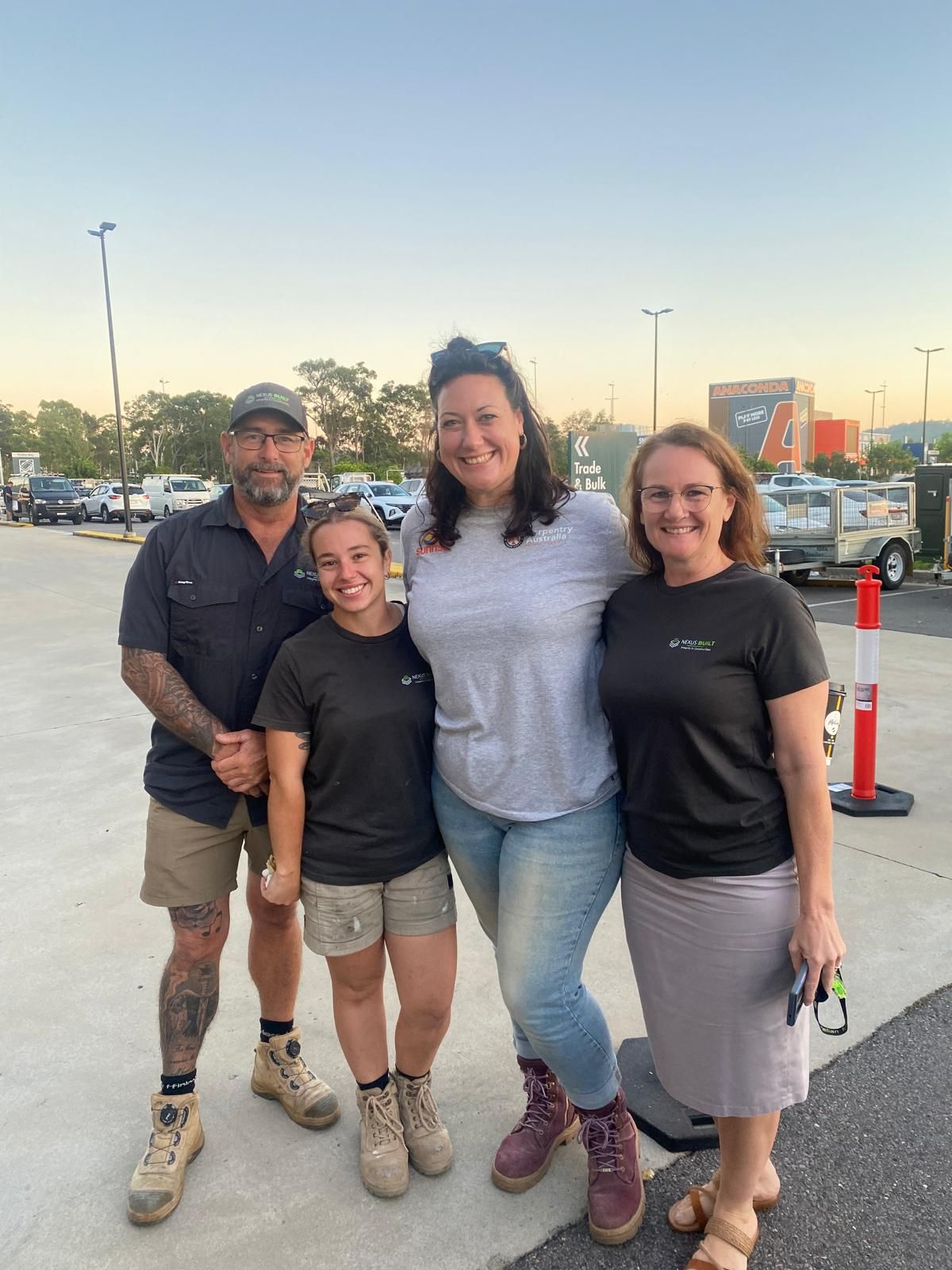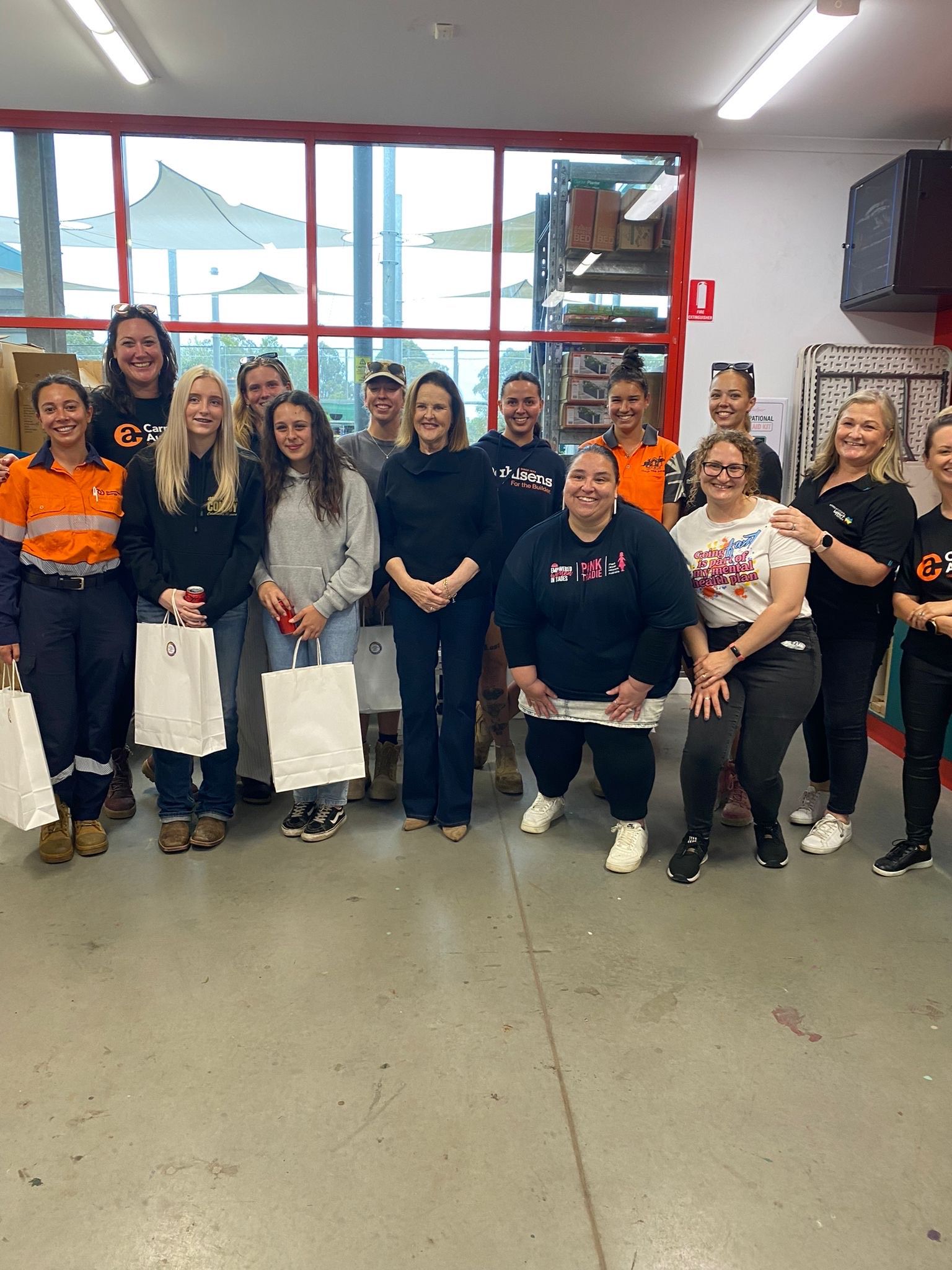Carpentry and Community: How Hannah Keirl Champions Diversity in Trades
)
In the male-dominated construction industry, Hannah Keirl from Carpentry Australia, is making significant strides for women in trades. This post explores the challenges women face, such as long delays in securing apprenticeships and a lack of role models. Hannah shares initiatives like the Carpenther Crew, which connects female carpenters and promotes inclusive hiring practices. With insights on improving workplace culture and retention through diversity, Hannah’s work is paving the way for a more equitable future in carpentry.
About Hannah Keirl: 
Hannah is the Marketing, Community & Projects Manager for Carpentry Australia, the national industry association dedicated to supporting and representing carpenters across Australia. As a passionate advocate for diversity and inclusion in the trades, Hannah has extensive experience in community engagement and the construction industry. She drives programs that promote representation, encourage safe work cultures, and create opportunities for underrepresented groups in the trade.
What are some of the challenges women face in construction? Can you share a personal experience or observation from you or your colleagues?
When it comes to challenges women can face in the construction industry, I’ve heard it all. Whether it’s a 1.5km walk to the nearest clean toilet, being bitten on the calf when up a ladder (“you look so tasty”), to simply not being given the opportunity because “women don’t want to be chippys.” Take your pick. Sites can be very macho / sexist, unconscious bias means women are underestimated, and with women making up just 3% of all carpenters in Australia there is a lack of female role models (for both men and women).
Taking aside the extreme situations and scenarios (there are some incredible employers out there!) the reality is that when we conducted a survey asking how long it took a women to get hired into her apprenticeship, the average time was 111 days. For men, it took an average of 14 days to gain their apprenticeship. If someone is spending that long looking for an apprenticeship – odds are they’re going to be a great hire, because they want to be there.
What initiatives have you or your leadership implemented to promote gender diversity and inclusion within the construction industry, particularly in traditionally male-dominated roles?
We actively seek to advocate for and showcase female chippys in the trade. We’ve just built out our Carpenther Crew in the Carpentry Australia portal, where we’ve:
-
Signed up 124 Employers of Choice. These are etted employers who have participated in bias training and are ready to hire female carpenters. You can sign up to be an Employer of Choice for free here.
-
Created a space for female carpenters to participate in peer-to-peer networking or mentoring
-
Created online learning opportunities around equity, mental health, navigating pregnancy and parenthood as a tradie and more.
-
Created ‘cheat sheets’ for small business owners to ensure they’ve covered bases for hiring inclusively – from HR Checklists to where to get appropriate PPE. There’s even a list of tools for women! (Jokes!! That’d be like buying the left handed hammer😉).
Additionally, we’re looking to support all chippys from pre-apprenticeship to qualified to Builder and beyond. All apprentices receive a sponsored membership to Carpentry Australia so they can access training, resources, events and industry updates.


How do you see the role of women evolving in the construction sector in Melbourne, and what opportunities do you believe exist for further empowering women in this field?
Melbourne has long been a test study for gender-equity with the Building Equitable Futures Strategy & the Building Equality Policy on Big Build projects. Whilst the Ison Road Overpass now runs with 30% women across site, there has been pushback and mixed results as to the success of these initiatives.
May RTOs and employment organizations are now running ‘try a trade’ days or female only pre-apprenticeship courses to allow women to become comfortable with the tools and trade basics before joining a mixed cohort – which is bringing in new group of confident and passionate women to carpentry and the trades.
In residential builds where teams are smaller, and these policies don’t apply, we have room to create space for women sooner and with a better culture from day one. On average a woman is in her mid-twenties when she starts her carpentry trade, and this more mature mindset means care for tools, attention to detail and a safer site. I’m excited to see more women get their trade, get their Builders’ Licence and become industry leaders.
In your opinion, what structural changes are necessary within the construction industry to create a more inclusive and supportive environment for women, and how can these changes benefit the sector as a whole?
Trades are a team sport. One trade can’t build a house. And just as we work together to build a house, we need to build better foundations for all humans in the trades. We have huge skills shortages (have you seen the amount of apprentice ads?), and we need more people – of all genders, ages and backgrounds – to be picking up the tools. The Carpentry Australia Jobs Board consistently has 10+ employers seeking apprentices, subbies and qualified carpenters – and we’ve got to be training every type of human for these roles.
As jobs have no gender, I’d like to flip this question and ask:
1. Improved Workplace Culture
Studies show that a lack of diversity in construction can lead to a toxic work environment with high levels of stress and poor mental health outcomes for both men and women. Increasing the number of women can help break down these harmful norms and create a more inclusive and supportive atmosphere – which also helps to reduce the rate of suicide amongst male construction workers. NAWIC states that 30% is the number of women needed to make a site happy and healthy for all.
2. Reduced Stress and improved work life balance
The long hours and demanding nature of the construction industry can negatively impact mental health. A more diverse workforce, with more women potentially seeking more flexible or part-time arrangements, can help normalise these options for all tradies, leading to better work-life balance and reduced stress. This improves retention across all genders.
3. Better problem-solving, innovation and creativity
A diverse workforce brings different perspectives and approaches to problem-solving, which can lead to more effective solutions and improved project outcomes. This can reduce the pressure on individuals and teams to meet unrealistic deadlines and expectations.
4. Safer sites
Women tend to take less risks – and are more vigilant to WHS than their male counterparts. This has a knock-on effect – meaning more of us are getting home safely each day.
5. A more profitable business
Whether it’s the type of business you can attract (single mums doing a renovation, aged care etc) or how you deliever on a project, studies have shown that diverse teams increase a company’s bottom line by up to 35%.
Can you share a success story or highlight a project where the contributions of women in construction have led to innovative outcomes and enhanced project success?
I personally love the work that @Sister.Carpentry is doing. She’s the epitome of sustainable – from making her own decking boards out of reclaimed timber to salvaged, locally milled, charred silver top ash cladding to which she then did Yakisugi (also known as Shou Sugi Ban). This is a traditional Japanese method of preserving wood by charring its surface creating a durable and weather-resistant material, making it suitable for both interior and exterior applications. The charred surface also provides a unique aesthetic, highlighting the wood's natural grain.
How do you envision the future of mentorship and professional development programs for women in construction, and what impact do you believe these initiatives can have on career progression and retention rates within the industry?
-
For mentorship expect a blended model: in-person s plus always-on digital platforms that pair mentees with mentors outside their immediate employer, solving the “tiny fish, same pond”.
-
Micro-credentials to upskills. TAFEs & RTOs are providing more and more options for the trades. Whether it be in technology & AI applications, or around materials.
-
Better career planning for everyone. No matter your gender, it’s important to understand how you get to where you want to go. What’re the steps to get your Builders’ Licence? To start a business? To quote accurately? These are all things we are regularly helping members with at Carpentry Australia.
We are working with over 100 media outlets, associations, and industry bodies actively promoting the expos. If you're interested in working with us, become an event partner today!
Melbourne Build is the leading and largest construction trade show for Melbourne and Victoria, taking place October 22nd & 23rd 2025 at MCEC. Featuring two jam-packed days of knowledge-sharing, 450+ expert speakers across 12 conference stages, a 175+ booth exhibition, Meet the Buyers, business networking, live music, entertainment and so much more! Don’t miss out on free tickets.

